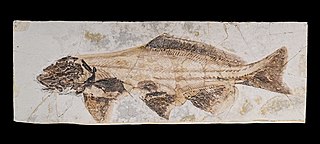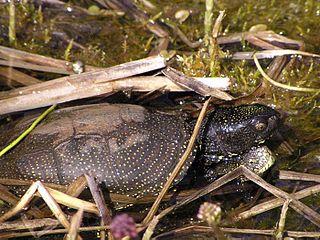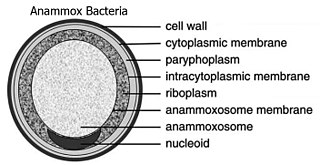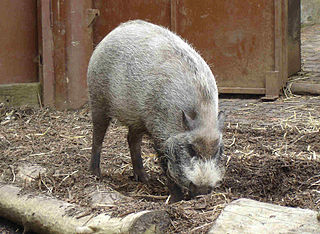
Vespertilionidae is a family of micro-bats, of the order Chiroptera, flying insect-eating mammals variously described as the common, vesper, or simple nosed bats. The vespertilionid family is the most diverse and widely distributed of bat genera, specialised in many forms to occupy a range of habitats and ecological circumstances, and it is frequently observed or the subject of research. The facial features of the species are often simple, as they mainly rely on vocally emitted echolocation. The tail of the species are enclosed by the lower flight membranes between the legs, Over 300 species are distributed all over the world, on every continent except Antarctica. It owes its name to the genus Vespertilio, which takes its name from a word for bat, vespertilio, derived from the Latin term vesper meaning 'evening'; they are termed as evening bats and once referred to as 'evening birds'.

In biology, a subgenus is a taxonomic rank directly below genus.

Acipenseriformes is an order of basal ray-finned fishes that includes the sturgeons and paddlefishes, as well as some extinct families.

The Emydinae are a subfamily of turtles in the family Emydidae.

Planctomycetes are a phylum of aquatic bacteria and are found in samples of brackish, and marine and fresh water. They reproduce by budding. In structure, the organisms of this group are ovoid and have a holdfast, at the tip of a thin cylindrical extension from the cell body called the stalk, at the nonreproductive end that helps them to attach to each other during budding.

In biological classification, especially zoology, the type genus is the genus which defines a biological family and the root of the family name.

Heosemys is a genus of freshwater turtles in the family Geoemydidae. The genus Heosemys was split out of the related genus Geoemyda by McDowell in 1964.

A salp or salpa is a barrel-shaped, planktonic tunicate. It moves by contracting, thus pumping water through its gelatinous body, one of the most efficient examples of jet propulsion in the animal kingdom. The salp strains the pumped water through its internal feeding filters, feeding on phytoplankton.

The Microhylidae, commonly known as narrow-mouthed frogs, are a geographically widespread family of frogs. The 584 species are in 61 genera and 11 subfamilies, which is the largest number of genera of any frog family.

African tetras are a group of characiform fish exclusively found in Africa. This family contains about 18 genera and 119 species. Among the best known members are the Congo tetra, and African tigerfish.

Emys is a small genus of turtles in the family Emydidae. The genus is endemic to Europe and North America.

Tube-dwelling anemones or ceriantharians look very similar to sea anemones but belong to an entirely different subclass of anthozoans. They are solitary, living buried in soft sediments. Tube anemones live inside and can withdraw into tubes, which are composed of a fibrous material made from secreted mucus and threads of nematocyst-like organelles known as ptychocysts. Ceriantharians were formerly classified in the taxon Ceriantipatharia along with the black corals but have since been moved to their own subclass, Ceriantharia.

Eucnemesaurus is a basal sauropodomorph dinosaur genus usually considered to be a synonym of Euskelosaurus. Recent study by Yates (2006), however, indicates that it is valid and the same animal as putative "giant herrerasaurid" Aliwalia.

Trionychia is a superfamily of turtles which encompasses the species that are commonly referred to as softshelled turtles as well as some others. They are found throughout the temperate regions of the world. The Jurassic genus Sinaspideretes is considered the earliest representative of the superfamily.
Hyphochytrids are eukaryotic organisms in the group of Stramenopiles (Heterokonta).

Cyclanorbis is a genus of softshell turtles in the family Trionychidae. The genus is endemic to Africa.

Acanthochelys is a genus of turtles, the spiny swamp turtles, in the family Chelidae, subfamily Chelinae, found in South America. Until recently, the species of this genus were considered to be members of the genus Platemys, but were moved to the resurrected genus originally described by Gray (1873) based on the type species by monotypy Acanthochelys spixii.

Suinae is a subfamily of artiodactyl mammals that includes several of the extant members of Suidae and their closest relatives—the domestic pig and related species, such as babirusas. Several extinct species within the Suidae are classified in subfamilies other than Suinae. However, the classification of the extinct members of the Suoidea-the larger group that includes the Suidae, the peccary family (Tayassuidae), and related extinct species—is controversial, and different classifications vary in the number of subfamilies within Suidae and their contents. Some classifications, such as the one proposed by paleontologist Jan van der Made in 2010, even exclude from Suinae some extant taxa of Suidae, placing these excluded taxa in other subfamilies.
Babesiosoma is a genus of parasitic alveolates in the phylum Apicomplexia.
















